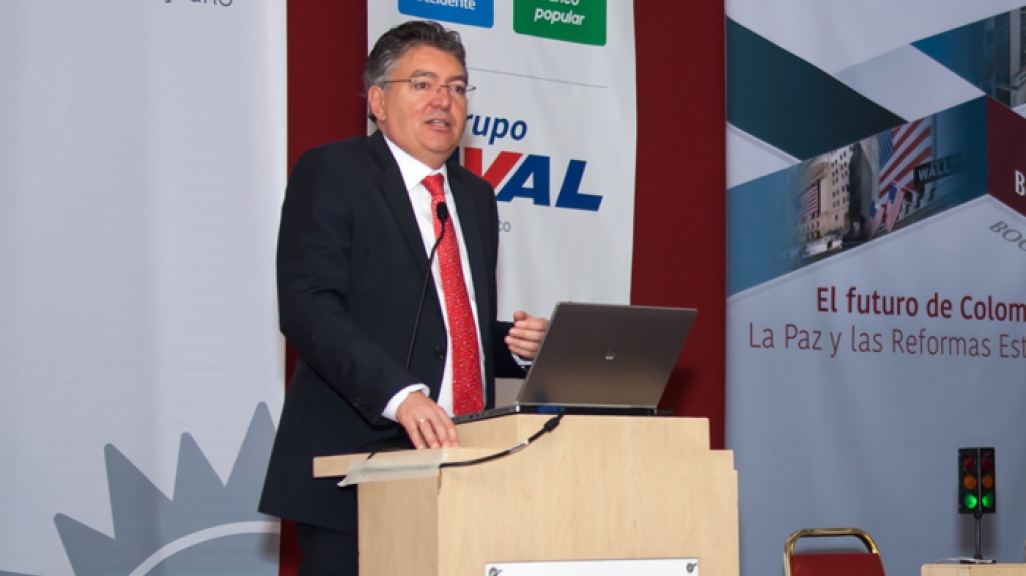Summary: Bogotá 2016 – Colombia in the Eyes of Wall Street
Summary: Bogotá 2016 – Colombia in the Eyes of Wall Street
Speakers discussed everything from Colombia’s public debt to structural reforms to the financial dividends of peace.
Speakers:
- Mauricio Cárdenas, Minister of Finance
- Alejandro Werner, Director, Western Hemisphere Department, International Monetary Fund (IMF)
- Luis Alarcón, Head of Global Markets, BBVA Colombia
- Jorge Humberto Botero, President, Fasecolda
- Fernando Bravo, Head of Andean Region Financing Group, Goldman Sachs
- Sergio Clavijo, President, ANIF
- Simón Gaviria, Director, National Planning Department
- Munir Jalil, Director, Chief Economist for the North Andean Region, Citibank
- Jaime Vargas, Tax Managing Partner, EY
- Leonardo Villar, Executive Director, Fedesarrollo
- Kevin Whitaker, U.S. Ambassador to Colombia
- Ragnhild Melzi, Vice President, Americas Society/Council of the Americas
While the drop in oil prices has hit Colombia hard, the country’s projected GDP growth is better than the average for Latin America and the Caribbean, said AS/COA Vice President Ragnhild Melzi in her opening remarks at AS/COA’s annual conference in Bogotá on June 9. Melzi also highlighted a historically low unemployment rate and poverty rate below the regional average. Still, she said, the country faces the formidable challenges of finalizing and then implementing a final peace agreement with the Revolutionary Armed Forces of Colombia, aka the FARC, continued tax reforms, and large-scale infrastructure projects like a fourth-generation road systems known as 4G.
At #COLWallSt Colombia's Minister of Finance @MauricioCard forecasts 3% GDP growth in 2016. @ASCOA @ANIFCO pic.twitter.com/sW9VPf8g9F
— AS/COA Media (@ASCOAMedia) June 9, 2016
Finance Minister Mauricio Cardenas then gave an overview of how the Colombian economy has reacted to the oil price drop, which led to an unprecedented $20 billion in losses from exports in one year, representing 5 percent of GDP. When prices first started to fall in 2014, the minister said, Colombia passed tax reform that helped mitigate the deficit. While Colombia’s public debt increased to 41 percent of GDP in 2015, the rise was due primarily to the fact that the Colombian peso lost value vis-à-vis the U.S. dollar, he said, and the debt levels themselves are “stable.” His ministry adjusted the 2016 budget, cutting spending worth 1.2 percent of GDP, and projects that sectors like agriculture and manufacturing will bring GDP growth this year to 3 percent.
.@MauricioCard: Si no hubiera habido tantos días festivos en el primer trimestre, el crecimiento habría sido un punto porcentual mayor.
— AS/COA Online (@ASCOA) June 9, 2016









